- Accueil
- Pages cachées
- 17 MARS 2024 NEWS
17 MARS 2024 NEWS
INSTITUT SUPERIEUR D'ANTHROPOLOGIE
INSTITUT OF ANTHROPOLOGY
COURS ONLINE – COURS A DISTANCE
INSCRIPTIONS OUVERTES
REGISTER NOW
ALLEMAGNE –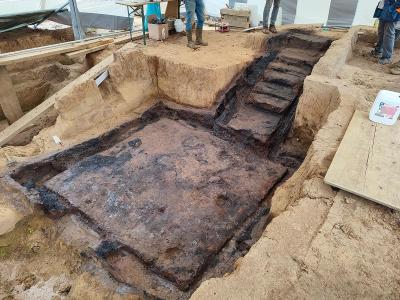 Frankfort - Archaeologists from the Frankfurt Archaeological Museum have recently uncovered a remarkably preserved wooden cellar in the Roman city of Nida in Frankfurt Situated in what is now Frankfurt’s modern districts of Heddernheim and Praunheim, Nida was a prominent Roman settlement. At the time of the Roman Empire, it was the capital of the Civitas Taunensium. The name of the settlement is known thanks to written sources from Roman times and probably derives from the name of the adjacent river Nidda. Nida probably had a population of 10,000 at its peak, during the first century AD, and was one of the largest Roman settlements in the Limes area. However, by AD 259 the population went into decline due to the Alemanni’s conquest of the Agri Decumates region. The wooden cellar was part of a Roman residential building, most likely built in the late first century AD on the southern side of Nida’s two main streets (Platea Praetoria). The cellar entrance faced south of the main street, and the burnt steps of the cellar staircase are still visible. Throughout the cellar, charred beams, charcoal, and fire debris bear witness to the destructive fire that once completely destroyed the house in antiquity. Some of the discoveries demonstrate the effects of the fire, such as a glass jar melted by the intense heat and iron utensils still lying on the cellar stairs. This demonstrates that the residents did not have time to save all of the movable objects from the cellar. The property was eventually rebuilt after the fire, but the cellar was no longer in use. To determine the exact date of the construction and destruction, the finds from the excavation must first be evaluated. The cellar is not the first to contain fire debris from the Roman Nida. Similar finds were discovered during excavations in the ancient city several times over the last century, but they were usually less well preserved and had not been examined as thoroughly using modern excavation methods.
Frankfort - Archaeologists from the Frankfurt Archaeological Museum have recently uncovered a remarkably preserved wooden cellar in the Roman city of Nida in Frankfurt Situated in what is now Frankfurt’s modern districts of Heddernheim and Praunheim, Nida was a prominent Roman settlement. At the time of the Roman Empire, it was the capital of the Civitas Taunensium. The name of the settlement is known thanks to written sources from Roman times and probably derives from the name of the adjacent river Nidda. Nida probably had a population of 10,000 at its peak, during the first century AD, and was one of the largest Roman settlements in the Limes area. However, by AD 259 the population went into decline due to the Alemanni’s conquest of the Agri Decumates region. The wooden cellar was part of a Roman residential building, most likely built in the late first century AD on the southern side of Nida’s two main streets (Platea Praetoria). The cellar entrance faced south of the main street, and the burnt steps of the cellar staircase are still visible. Throughout the cellar, charred beams, charcoal, and fire debris bear witness to the destructive fire that once completely destroyed the house in antiquity. Some of the discoveries demonstrate the effects of the fire, such as a glass jar melted by the intense heat and iron utensils still lying on the cellar stairs. This demonstrates that the residents did not have time to save all of the movable objects from the cellar. The property was eventually rebuilt after the fire, but the cellar was no longer in use. To determine the exact date of the construction and destruction, the finds from the excavation must first be evaluated. The cellar is not the first to contain fire debris from the Roman Nida. Similar finds were discovered during excavations in the ancient city several times over the last century, but they were usually less well preserved and had not been examined as thoroughly using modern excavation methods.
Roman Wooden Cellar Found in Frankfurt, Germany - Arkeonews
ALLEMAGNE – 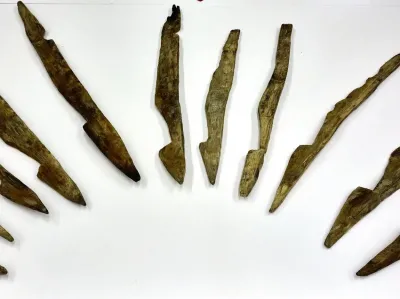 Bad Ems - In 2023, archaeologists from Goethe-Universität Frankfurt am Main uncovered a series of wooden defensive spikes during excavations of a 1st century AD Roman fort in Bad Ems, western Germany. The spikes were placed in ditches around the fort in a V-shape to serve as defensive barriers, which were found preserved in the water-logged soil of Blöskopf hill. No other examples of spikes have been found throughout the Roman world, however, they are referenced in Roman writings such as an account by Julius Caesar in his book, the “Gallic Wars”. Ceasar wrote: “Behind these he raised a rampart and wall twelve feet high; to this he added a parapet and battlements, with large stakes cut like stags’ horns, projecting from the junction of the parapet and battlements, to prevent the enemy from scaling it, and surrounded the entire work with turrets, which were eighty feet distant from one another.” The Romans established two military encampments that were first discovered in 2016, with further evidence of Roman smelting works. The spikes were uncovered in the smaller of the two encampments and likely extended throughout the entire downward tapering ditch. The larger encampment, designated as “Auf dem Ehrlich”, dates back to the early Roman imperial period, however, no traces of spikes were found during excavations. Archaeologists propose that the encampments were built to protect silver mining operations in the area, supported by historical records such as Tacitus’ Annals, which detail Emperor Claudius assigning the praetor, Curtius Rufus, to oversee silver extraction. Following a length preservation process, conservators from Goethe-Universität Frankfurt am Main have unveiled the Roman spikes for the first time at the Leibniz Centre for Archaeology in Mainz. “We owe these unusually well-preserved archaeological finds primarily to the oxygen-poor wet soil, which was covered by dense layers of sediment. In my 35 years of professional activity, I have never had to deal with such firmly attached sediment layers,” says Markus Wittköpper, wet wood preservation expert at LEIZA.
Bad Ems - In 2023, archaeologists from Goethe-Universität Frankfurt am Main uncovered a series of wooden defensive spikes during excavations of a 1st century AD Roman fort in Bad Ems, western Germany. The spikes were placed in ditches around the fort in a V-shape to serve as defensive barriers, which were found preserved in the water-logged soil of Blöskopf hill. No other examples of spikes have been found throughout the Roman world, however, they are referenced in Roman writings such as an account by Julius Caesar in his book, the “Gallic Wars”. Ceasar wrote: “Behind these he raised a rampart and wall twelve feet high; to this he added a parapet and battlements, with large stakes cut like stags’ horns, projecting from the junction of the parapet and battlements, to prevent the enemy from scaling it, and surrounded the entire work with turrets, which were eighty feet distant from one another.” The Romans established two military encampments that were first discovered in 2016, with further evidence of Roman smelting works. The spikes were uncovered in the smaller of the two encampments and likely extended throughout the entire downward tapering ditch. The larger encampment, designated as “Auf dem Ehrlich”, dates back to the early Roman imperial period, however, no traces of spikes were found during excavations. Archaeologists propose that the encampments were built to protect silver mining operations in the area, supported by historical records such as Tacitus’ Annals, which detail Emperor Claudius assigning the praetor, Curtius Rufus, to oversee silver extraction. Following a length preservation process, conservators from Goethe-Universität Frankfurt am Main have unveiled the Roman spikes for the first time at the Leibniz Centre for Archaeology in Mainz. “We owe these unusually well-preserved archaeological finds primarily to the oxygen-poor wet soil, which was covered by dense layers of sediment. In my 35 years of professional activity, I have never had to deal with such firmly attached sediment layers,” says Markus Wittköpper, wet wood preservation expert at LEIZA.
Roman defensive spikes unveiled at the Leibniz Centre for Archaeology (heritagedaily.com)
ISRAEL – 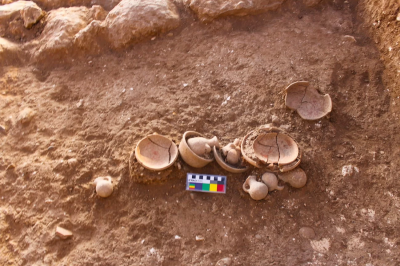 Tell es-Safi/Gath - Bar-Ilan University researchers shed “unprecedented light” on Philistine ritual practices, such as the use of psychoactive and medicinal plants, by analyzing plant seeds and fruits from two temple excavation sites in Tell es-Safi/Gath, central Israel. The enigmatic Philistine culture, which flourished during the Iron Age (ca. 1200-604 BCE), profoundly affected the southern Levant’s cultural history, agronomy, and dietary customs. More than a quarter century of excavations at Tell es-Safi/Gath in central Israel, identified as the biblical Gath of the Philistines and the home of Goliath, has provided a unique window into the world of this ancient civilization. In the systematic excavation project of the temple area in the lower city of Gath, a team from Bar-Ilan University in Israel, led by Prof. Aren Maeir (archaeology) and Prof. Ehud Weiss (archaeobotany), has overseen the reconstruction of the plants used in Philistine rituals. Tel Zafit (Gath of the Philistines) is a national park under the auspices of the Israel Nature and Parks Authority. The new study published in Scientific Reports contributed “valuable new data” on the Philistine way of life, positing a connection to broader Mediterranean and specifically Greek religious traditions, through the practices and plants found in the area. Dr. Suembikya Frumin, under Prof. Ehud Weiss’s supervision, studied Philistine plant use in their temples as part of her PhD project. Together with Dr. Amit Dagan, Maria Eniukhina, and Prof. Aren Maeir, they delved into the plant assemblages discovered within the temples’ precincts, uncovering a wealth of information regarding the significance of various plant species in Philistine religious rituals. Through meticulous examination and quantitative and qualitative analysis of the types of plants used, the timing of their harvest, modes of offering, and potential symbolic significance, the researchers pieced together a clearer picture of the Philistine approach to spirituality. Dr. Suembikya Frumin, manager of the Archaeobotany Laboratory at Bar-Ilan University and the study’s lead researcher, noted, “One of the most significant findings is the identification of earliest known ritual uses of several Mediterranean plants, such as the lilac chaste tree (Vitex agnus-castus), crown daisy (Glebionis coronaria), and silvery scabious (Lomelosia argentea). These widespread Mediterranean plants connect Philistines with cultic rituals, mythology and paraphernalia related to early Greek deities, such as Hera, Artemis, Demeter, and Asclepios. In addition, plants with psychoactive and medicinal properties in the Philistine temples reveal their use for cultic activities. The study revealed that the Philistine religion relied on the magic and power of nature, such as running water and seasonality, aspects that influence human health and life.” Moreover, analysis of the temples’ seeds and fruits provided valuable insights into the timing of rituals, with the importance of the early spring for temple rites, and the date of the final utilization of the temples — and their destruction by Hazael of Aram – which occurred in late summer or early fall. The seasonal aspect of Philistine religious practices underscores their deep connection to the natural worlds and the cycles of agriculture. Prof. Ehud Weiss, Director the Archaeobotany Laboratory at Bar-Ilan University and co-author of the study, commented, “Our findings challenge previous understandings of Philistine ritual practices and offer a fresh perspective on their cultural practices, and the connections between Philistine culture and broader Mediterranean religious traditions. By examining the plants they used in ritual contexts, we better understand how the Philistines perceived and interacted with the world around them.” Furthermore, the study proposes intriguing parallels between Philistine and Aegean ceremonial practices. The discovery of loom weights (an apparatus used for fabric production) within Philistine temples, a common feature in Aegean cult locations associated with Hera, further strengthens the hypothesis of cultural exchange and influence between the two regions.“These findings open up new avenues for research into the cultural and religious interactions between the Philistines and neighboring regions,” added study co-author Prof. Aren Maeir, of Bar-Ilan University’s Martin (Szusz) Department of Land of Israel Studies and Archaeology, who has directed the excavations at Tell es-Safi/Gath for more than 25 years. “By employing advanced quantitative and qualitative analyses of plant assemblages, we have deepened our understanding of ancient cultic practices and their significance in the broader Mediterranean world.”
Tell es-Safi/Gath - Bar-Ilan University researchers shed “unprecedented light” on Philistine ritual practices, such as the use of psychoactive and medicinal plants, by analyzing plant seeds and fruits from two temple excavation sites in Tell es-Safi/Gath, central Israel. The enigmatic Philistine culture, which flourished during the Iron Age (ca. 1200-604 BCE), profoundly affected the southern Levant’s cultural history, agronomy, and dietary customs. More than a quarter century of excavations at Tell es-Safi/Gath in central Israel, identified as the biblical Gath of the Philistines and the home of Goliath, has provided a unique window into the world of this ancient civilization. In the systematic excavation project of the temple area in the lower city of Gath, a team from Bar-Ilan University in Israel, led by Prof. Aren Maeir (archaeology) and Prof. Ehud Weiss (archaeobotany), has overseen the reconstruction of the plants used in Philistine rituals. Tel Zafit (Gath of the Philistines) is a national park under the auspices of the Israel Nature and Parks Authority. The new study published in Scientific Reports contributed “valuable new data” on the Philistine way of life, positing a connection to broader Mediterranean and specifically Greek religious traditions, through the practices and plants found in the area. Dr. Suembikya Frumin, under Prof. Ehud Weiss’s supervision, studied Philistine plant use in their temples as part of her PhD project. Together with Dr. Amit Dagan, Maria Eniukhina, and Prof. Aren Maeir, they delved into the plant assemblages discovered within the temples’ precincts, uncovering a wealth of information regarding the significance of various plant species in Philistine religious rituals. Through meticulous examination and quantitative and qualitative analysis of the types of plants used, the timing of their harvest, modes of offering, and potential symbolic significance, the researchers pieced together a clearer picture of the Philistine approach to spirituality. Dr. Suembikya Frumin, manager of the Archaeobotany Laboratory at Bar-Ilan University and the study’s lead researcher, noted, “One of the most significant findings is the identification of earliest known ritual uses of several Mediterranean plants, such as the lilac chaste tree (Vitex agnus-castus), crown daisy (Glebionis coronaria), and silvery scabious (Lomelosia argentea). These widespread Mediterranean plants connect Philistines with cultic rituals, mythology and paraphernalia related to early Greek deities, such as Hera, Artemis, Demeter, and Asclepios. In addition, plants with psychoactive and medicinal properties in the Philistine temples reveal their use for cultic activities. The study revealed that the Philistine religion relied on the magic and power of nature, such as running water and seasonality, aspects that influence human health and life.” Moreover, analysis of the temples’ seeds and fruits provided valuable insights into the timing of rituals, with the importance of the early spring for temple rites, and the date of the final utilization of the temples — and their destruction by Hazael of Aram – which occurred in late summer or early fall. The seasonal aspect of Philistine religious practices underscores their deep connection to the natural worlds and the cycles of agriculture. Prof. Ehud Weiss, Director the Archaeobotany Laboratory at Bar-Ilan University and co-author of the study, commented, “Our findings challenge previous understandings of Philistine ritual practices and offer a fresh perspective on their cultural practices, and the connections between Philistine culture and broader Mediterranean religious traditions. By examining the plants they used in ritual contexts, we better understand how the Philistines perceived and interacted with the world around them.” Furthermore, the study proposes intriguing parallels between Philistine and Aegean ceremonial practices. The discovery of loom weights (an apparatus used for fabric production) within Philistine temples, a common feature in Aegean cult locations associated with Hera, further strengthens the hypothesis of cultural exchange and influence between the two regions.“These findings open up new avenues for research into the cultural and religious interactions between the Philistines and neighboring regions,” added study co-author Prof. Aren Maeir, of Bar-Ilan University’s Martin (Szusz) Department of Land of Israel Studies and Archaeology, who has directed the excavations at Tell es-Safi/Gath for more than 25 years. “By employing advanced quantitative and qualitative analyses of plant assemblages, we have deepened our understanding of ancient cultic practices and their significance in the broader Mediterranean world.”
Botanical Findings Analysis from Biblical area of Goliath sheds Unprecedented Light on Philistine Ritual Practices - Arkeonews
MEXIQUE -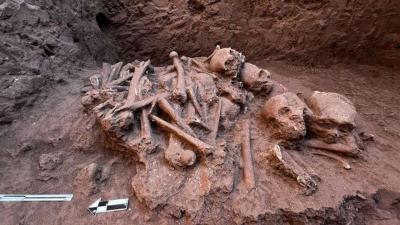 Pozo de Ibarra - Archaeologists from the National Institute of Anthropology and History in Mexico have uncovered human sacrifices from 500-800 A.D. in the town of Pozo de Ibarra The discovery of bones during the construction of a sewer network led archaeologists from the National Institute of Anthropology and History (INAH) to excavate a burial site where they also found a deposit of anatomically unrelated human bones and skulls in the town of Pozo de Ibarra, Mexico. The excavations revealed femur, tibia and ulna bones, as well as skulls that had been deliberately placed or stacked on top of each other. Some of at least seven complete skulls belonging to male individuals of different ages show evidence of skull modification, a cultural practice among Mesoamerican cultures that involved changing the shape of the skull for aesthetic purposes and possibly as a form of social distinction. The way the skeletons were arranged indicates the presence of certain ceremonial practices related to death in the region in pre-Hispanic times, archeology news channel Heritage Daily reported. The discovery is probably related to the Amapa cultural phase (500-800 A.D.) when the tomb also contained ceramic vessels and anthropomorphic figurines.
Pozo de Ibarra - Archaeologists from the National Institute of Anthropology and History in Mexico have uncovered human sacrifices from 500-800 A.D. in the town of Pozo de Ibarra The discovery of bones during the construction of a sewer network led archaeologists from the National Institute of Anthropology and History (INAH) to excavate a burial site where they also found a deposit of anatomically unrelated human bones and skulls in the town of Pozo de Ibarra, Mexico. The excavations revealed femur, tibia and ulna bones, as well as skulls that had been deliberately placed or stacked on top of each other. Some of at least seven complete skulls belonging to male individuals of different ages show evidence of skull modification, a cultural practice among Mesoamerican cultures that involved changing the shape of the skull for aesthetic purposes and possibly as a form of social distinction. The way the skeletons were arranged indicates the presence of certain ceremonial practices related to death in the region in pre-Hispanic times, archeology news channel Heritage Daily reported. The discovery is probably related to the Amapa cultural phase (500-800 A.D.) when the tomb also contained ceramic vessels and anthropomorphic figurines.
Mexican archaeologists uncover traces of ancient human sacrifices - Turkiye Newspaper
TURQUIE –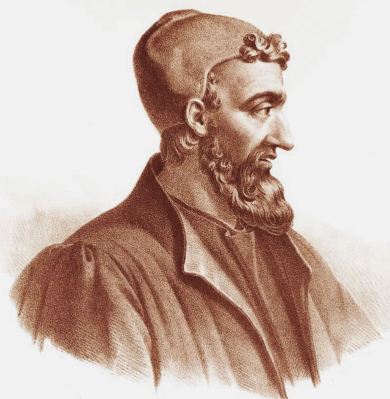 Izmir - As a part of research on medicinal plants in Bergama, İzmir’s historic district where Galen (129 AD -200 AD) once resided, academics from Ege University are investigating the contributions of the renowned ancient Roman physician’s prescriptions over the years. Galen (Galēnos) was one of the most prominent ancient physicians as well as a philosopher. In addition to his title as the father of pharmacy, Galen is also the first sports physician of the Roman world. His medical, and in some cases philosophical, work had a huge impact throughout the medieval period and even later, both in Europe and elsewhere. His position as the leading authority in medical theory extended for at least fourteen hundred years. As part of a study conducted by the University of Ege to investigate how plants have been used by humans for centuries, Dr. Şükrü Arasan visited villages in the region and spoke to locals to compare the herbal prescriptions recorded in the Bergama region with those of Galen’s. Doctor Şükrü Arasan and his team’s research has led them to local communities where the use of plants in medicine is still a living tradition. By comparing the herbal remedies created by these villagers to those documented by Galen, the researchers unearthed an intriguing continuity. The study reveals that 160 different plant species are still in use, with approximately 130 of these employed for therapeutic purposes. “The most prominent subject in our study was plants used in traditional folk medicine. One treatment that surprised us was the use of henbane seeds against the larvae of myiasis flies. The seeds of the henbane plant are mixed with animal tallow or tail fat and different processes are applied to produce smoke. The patient’s face is exposed to the smoke and the fly larvae are observed to fall into a bowl of water under the chin,” Dr. Arasan shared. This is undoubtedly a testament to the innovative and practical applications of these ancient prescriptions. Emphasizing the importance of dosage when using plants as traditional medicine, Professor Hasan Yıldırım at Ege University’s Department of Biology, said, “We are studying Galen’s formulas. his specialty is hidden in the doses of his formulas. For example, it is said to ‘drink sage tea.’ But how much should you drink? The use, effect, dose, and side effects of each plant are different. A small amount of many herbal active substances is medicinal, but too much of it may be poisonous.”This delicate balance emphasizes the need to recognize and honor the power of natural remedies in addition to the wisdom of age-old customs. The study of Galen’s formulas serves as a reminder of the complex relationship between nature and health, a never-ending dialogue between the past and present.
Izmir - As a part of research on medicinal plants in Bergama, İzmir’s historic district where Galen (129 AD -200 AD) once resided, academics from Ege University are investigating the contributions of the renowned ancient Roman physician’s prescriptions over the years. Galen (Galēnos) was one of the most prominent ancient physicians as well as a philosopher. In addition to his title as the father of pharmacy, Galen is also the first sports physician of the Roman world. His medical, and in some cases philosophical, work had a huge impact throughout the medieval period and even later, both in Europe and elsewhere. His position as the leading authority in medical theory extended for at least fourteen hundred years. As part of a study conducted by the University of Ege to investigate how plants have been used by humans for centuries, Dr. Şükrü Arasan visited villages in the region and spoke to locals to compare the herbal prescriptions recorded in the Bergama region with those of Galen’s. Doctor Şükrü Arasan and his team’s research has led them to local communities where the use of plants in medicine is still a living tradition. By comparing the herbal remedies created by these villagers to those documented by Galen, the researchers unearthed an intriguing continuity. The study reveals that 160 different plant species are still in use, with approximately 130 of these employed for therapeutic purposes. “The most prominent subject in our study was plants used in traditional folk medicine. One treatment that surprised us was the use of henbane seeds against the larvae of myiasis flies. The seeds of the henbane plant are mixed with animal tallow or tail fat and different processes are applied to produce smoke. The patient’s face is exposed to the smoke and the fly larvae are observed to fall into a bowl of water under the chin,” Dr. Arasan shared. This is undoubtedly a testament to the innovative and practical applications of these ancient prescriptions. Emphasizing the importance of dosage when using plants as traditional medicine, Professor Hasan Yıldırım at Ege University’s Department of Biology, said, “We are studying Galen’s formulas. his specialty is hidden in the doses of his formulas. For example, it is said to ‘drink sage tea.’ But how much should you drink? The use, effect, dose, and side effects of each plant are different. A small amount of many herbal active substances is medicinal, but too much of it may be poisonous.”This delicate balance emphasizes the need to recognize and honor the power of natural remedies in addition to the wisdom of age-old customs. The study of Galen’s formulas serves as a reminder of the complex relationship between nature and health, a never-ending dialogue between the past and present.
Academics Uncover Ancient Roman Physicians Galen’s Pharmacy Legacy in İzmir - Arkeonews
SOUDAN – 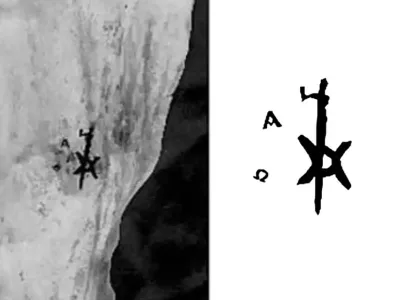 Ghazali - A 1,300-year-old body discovered in Sudan has revealed an ancient “Christ tattoo” on the right foot of the remains. The body was discovered by scientists near the medieval Ghazali monastery There were four cemeteries at the site, with hundreds of graves. This particular body was taken to the Polish Centre of Mediterranean Archaeology at the University of Warsaw for examination. Kari A. Guilbault of Purdue University discovered the tattoo, which is in the form of a “Christogram.” According to the release, a Christogram “is a religious symbol combining the Greek letters ‘chi’ and ‘rho’ to form a monogram abbreviation for the name of Christ.” The tattoo also contained the letters for “alpha” and “omega,” “beginning” and “end,” a reference to God as the beginning and end of all things. Dr. Robert Stark, head of the bioarchaeological study of the remains, believes the tattoo may be the symbol of the person’s spiritual journey. The find is significant because only one other tattoo has been discovered from medieval Sudan. Stark also believed that the location of the tattoo hints that it was meant to be a private proclamation of the bearer’s faith. Another interesting thing about the tattoo is that the remains are believed to belong to a man. Prior to this discovery, all religious tattoos had been found on women. The Daily Mail that such tattoos give fascinating insights about the bearer. “One of the big questions is how can we tell someone was religious and this is one of those tangible markers of their Christian faith. This is a really fine example of how a person’s faith was a part of their life and their body,” she said. Scientists believe the individual lived between 667 and 774 AD and was between the ages of 35 and 50 at the time of his death. It is unclear if the individual was a monk as he was found in a cemetery separate from the monks.
Ghazali - A 1,300-year-old body discovered in Sudan has revealed an ancient “Christ tattoo” on the right foot of the remains. The body was discovered by scientists near the medieval Ghazali monastery There were four cemeteries at the site, with hundreds of graves. This particular body was taken to the Polish Centre of Mediterranean Archaeology at the University of Warsaw for examination. Kari A. Guilbault of Purdue University discovered the tattoo, which is in the form of a “Christogram.” According to the release, a Christogram “is a religious symbol combining the Greek letters ‘chi’ and ‘rho’ to form a monogram abbreviation for the name of Christ.” The tattoo also contained the letters for “alpha” and “omega,” “beginning” and “end,” a reference to God as the beginning and end of all things. Dr. Robert Stark, head of the bioarchaeological study of the remains, believes the tattoo may be the symbol of the person’s spiritual journey. The find is significant because only one other tattoo has been discovered from medieval Sudan. Stark also believed that the location of the tattoo hints that it was meant to be a private proclamation of the bearer’s faith. Another interesting thing about the tattoo is that the remains are believed to belong to a man. Prior to this discovery, all religious tattoos had been found on women. The Daily Mail that such tattoos give fascinating insights about the bearer. “One of the big questions is how can we tell someone was religious and this is one of those tangible markers of their Christian faith. This is a really fine example of how a person’s faith was a part of their life and their body,” she said. Scientists believe the individual lived between 667 and 774 AD and was between the ages of 35 and 50 at the time of his death. It is unclear if the individual was a monk as he was found in a cemetery separate from the monks.
“Christ tattoo” Discovered on 1,300-Year-Old Body (beliefnet.co,
ANGLETERRE – 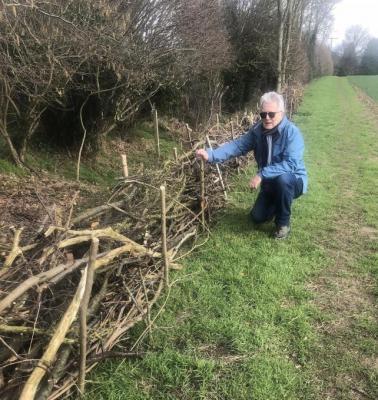 Hadleigh - A six-month community campaign has helped safeguard Hadleigh’s medieval track. Archivists at the society then made an incredible discovery - that the track, known as a Holloway, dates from the late medieval period and has been known as Bacon Lane for 500 years.
Hadleigh - A six-month community campaign has helped safeguard Hadleigh’s medieval track. Archivists at the society then made an incredible discovery - that the track, known as a Holloway, dates from the late medieval period and has been known as Bacon Lane for 500 years.
Local action helps protect Hadleigh’s medieval Bacon Lane | East Anglian Daily Times (eadt.co.uk)
CHINE – 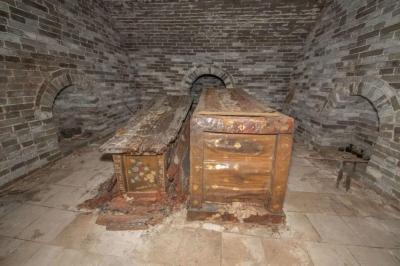
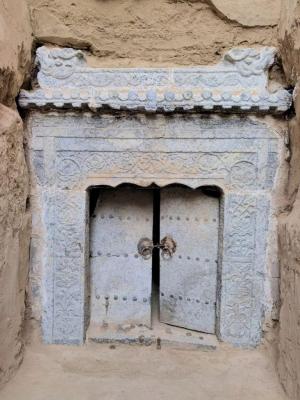
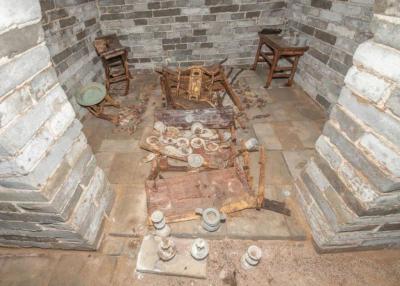
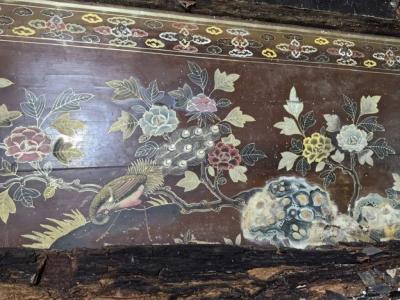 Xinzhou - Archaeologists from the Shanxi Institute of Cultural Relics and Archeology have unearthed a well-preserved tomb from the Ming Dynasty (1368-1644) in Xinzhou city of Northern China’s Shanxi province. Even though the tomb is over 430 years old, its elaborate funerary furniture and wooden coffin are still intact and in excellent condition. In Shanxi, it is rare to find a tomb in such good condition with well-preserved wooden furnishings. The excavations have uncovered the remains of structures from the Longshan Period (2900-2100 B.C.) and the Warring States Period (475-221 BC), and 66 tombs from the Han, Tang, Jin, Yuan and Ming and Qing dynasties.Among them was an intact Ming Dynasty tomb discovered on the west terrace of Hexitou village in Xinzhou’s Xinfu district. Comprising a sloping passageway 17 meters (55.7 ft) long, a central burial chamber, and a smaller rear chamber, the tomb stretched about 25.3 meters (83ft) in length. A striking image captured the tomb’s sealed entrance, adorned with a stone gatehouse and a set of imposing double doors. The gate is stone carved to imitate a wood structure. Two dragon heads look outwards on each end of the roof. The stone slabs above and on each side of the doors are carved with florals. Archaeologists discovered two beautifully decorated wooden coffins with intricate motifs in the main burial chamber, as well as two niches: one in the south with four porcelain jars and one in the north with five porcelain jars and four bottles. The porcelain vessels contained grains, liquids, or oils. Brightly colored flowers, grasses, and specifically peacocks are painted on the well-maintained inner coffin. The better-preserved exterior coffin of the larger of the two features gold patterns in the shape of diamonds set against a tan backdrop. The smaller chamber is furnished with wooden altars, tables, chairs, candlesticks, lampstands, incense burners, tin pots, tin cups, tin plates, painted wooden figurines, inkstones, brushes, pen holders and other writing utensils. An epitaph inscribed in seal script offers a clue to the possible identity of the deceased: “Epitaph of the Prince of Ming Ru Hou’an,” hinting at a noble lineage and prestigious title. The second coffin, distinguished by a diamond-shaped pattern, bears an inscription in regular script. The inscription reads: “Ming Gu Rong Kao Hou Ru Wang Gong”, translating to “Entrusted by the Ming Dynasty to serve the royal court as a palace official. The wooden burial objects and sacrificial items were well-preserved, making this discovery rare in the city and even throughout the whole province, according to the institute.
Xinzhou - Archaeologists from the Shanxi Institute of Cultural Relics and Archeology have unearthed a well-preserved tomb from the Ming Dynasty (1368-1644) in Xinzhou city of Northern China’s Shanxi province. Even though the tomb is over 430 years old, its elaborate funerary furniture and wooden coffin are still intact and in excellent condition. In Shanxi, it is rare to find a tomb in such good condition with well-preserved wooden furnishings. The excavations have uncovered the remains of structures from the Longshan Period (2900-2100 B.C.) and the Warring States Period (475-221 BC), and 66 tombs from the Han, Tang, Jin, Yuan and Ming and Qing dynasties.Among them was an intact Ming Dynasty tomb discovered on the west terrace of Hexitou village in Xinzhou’s Xinfu district. Comprising a sloping passageway 17 meters (55.7 ft) long, a central burial chamber, and a smaller rear chamber, the tomb stretched about 25.3 meters (83ft) in length. A striking image captured the tomb’s sealed entrance, adorned with a stone gatehouse and a set of imposing double doors. The gate is stone carved to imitate a wood structure. Two dragon heads look outwards on each end of the roof. The stone slabs above and on each side of the doors are carved with florals. Archaeologists discovered two beautifully decorated wooden coffins with intricate motifs in the main burial chamber, as well as two niches: one in the south with four porcelain jars and one in the north with five porcelain jars and four bottles. The porcelain vessels contained grains, liquids, or oils. Brightly colored flowers, grasses, and specifically peacocks are painted on the well-maintained inner coffin. The better-preserved exterior coffin of the larger of the two features gold patterns in the shape of diamonds set against a tan backdrop. The smaller chamber is furnished with wooden altars, tables, chairs, candlesticks, lampstands, incense burners, tin pots, tin cups, tin plates, painted wooden figurines, inkstones, brushes, pen holders and other writing utensils. An epitaph inscribed in seal script offers a clue to the possible identity of the deceased: “Epitaph of the Prince of Ming Ru Hou’an,” hinting at a noble lineage and prestigious title. The second coffin, distinguished by a diamond-shaped pattern, bears an inscription in regular script. The inscription reads: “Ming Gu Rong Kao Hou Ru Wang Gong”, translating to “Entrusted by the Ming Dynasty to serve the royal court as a palace official. The wooden burial objects and sacrificial items were well-preserved, making this discovery rare in the city and even throughout the whole province, according to the institute.
Well-preserved Ming Dynasty tomb unearthed in China's Shanxi Province - Arkeonews
ALLEMAGNE –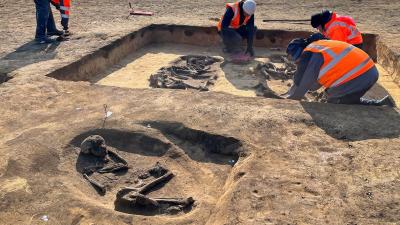 Eulenberg - A settlement area is currently being prepared for the US chip manufacturer Intel near Magdeburg. The currently claimed 300 hectares also partially include a small hill, the Eulenberg. Although not particularly high, it divides the otherwise relatively low-relief Börde landscape, whose fertile loess and black earth soils were already an important location factor for settlers in the early Neolithic period. However, the area currently examined turned out to be a highly complex, long-used burial and ritual landscape. During the Baalberg Culture (4100–3600 BC) in the middle Neolithic period, two large trapezoidal mortuary huts made of wood, 20 and 30 meters long, were built just 200 m apart from each other. Both were undoubtedly covered with a lot of earth; they were probably literally covered in hills and dominated the landscape. The corridor in between was probably a procession route around a thousand years later, during the period of the spherical amphora culture (3300–2800 BC). Along this path there are pairs of young, 2-3 year old cattle lying down. In one case, the grave of a 35 to 40 year old man was dug before the cattle burials. The image that emerges is of a cart with a driver or a plow pulled by cattle, settings that are already known from other older and contemporary burials. They symbolize that the most important possession, the security of one’s own livelihood, was offered to the gods with the cattle. Around 1,000 years later, a palisade ditch that was still 50 cm wide took up the course of the former procession route and deliberately included the larger of the two burial mounds in the approximately 3 hectare burial landscape. It passed over the cattle burials but did not destroy them. In addition, several Corded Pottery burial mounds (around 2800-2050 BC) were discovered around 600 m away and were up to 10 m in diameter. There is therefore an astonishing consistency in the ritual use of this part of the Eulenberg. The subsequent processing of the finds promises even more interesting insights.
Eulenberg - A settlement area is currently being prepared for the US chip manufacturer Intel near Magdeburg. The currently claimed 300 hectares also partially include a small hill, the Eulenberg. Although not particularly high, it divides the otherwise relatively low-relief Börde landscape, whose fertile loess and black earth soils were already an important location factor for settlers in the early Neolithic period. However, the area currently examined turned out to be a highly complex, long-used burial and ritual landscape. During the Baalberg Culture (4100–3600 BC) in the middle Neolithic period, two large trapezoidal mortuary huts made of wood, 20 and 30 meters long, were built just 200 m apart from each other. Both were undoubtedly covered with a lot of earth; they were probably literally covered in hills and dominated the landscape. The corridor in between was probably a procession route around a thousand years later, during the period of the spherical amphora culture (3300–2800 BC). Along this path there are pairs of young, 2-3 year old cattle lying down. In one case, the grave of a 35 to 40 year old man was dug before the cattle burials. The image that emerges is of a cart with a driver or a plow pulled by cattle, settings that are already known from other older and contemporary burials. They symbolize that the most important possession, the security of one’s own livelihood, was offered to the gods with the cattle. Around 1,000 years later, a palisade ditch that was still 50 cm wide took up the course of the former procession route and deliberately included the larger of the two burial mounds in the approximately 3 hectare burial landscape. It passed over the cattle burials but did not destroy them. In addition, several Corded Pottery burial mounds (around 2800-2050 BC) were discovered around 600 m away and were up to 10 m in diameter. There is therefore an astonishing consistency in the ritual use of this part of the Eulenberg. The subsequent processing of the finds promises even more interesting insights.
Funeral huts and chariot grave | Message @ Archeology Online - Breaking Latest News
TURQUIE – 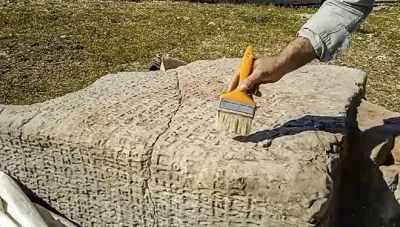 Önevler - The ancient inscription found near Kımıldağı (Kımıl Mount) in Önevler village of Adıyaman’s Gerger district in 2023 will shed light on the history of Commagene. The Kingdom of Commagene the ruling dynasty boasted descent from both Alexander and the Achaemenids. King Antiochus I (69–34 BC) claimed descent from Darius I through Orontes the Bactrian, an ardent supporter of Atraxerxes II against Cyrus and the 10,000, who married Artaxerxes’ daughter. A small kingdom that tried to balance its Iranian heritage with the political reality of being part of the Graeco-Roman world. It kept its identity from 163 BC until it became part of the Roman province of Syria in AD 72. Antiochus I supported Pompey against Mithradates VI of Pontus and proudly referred to himself as Philoromaios (“Rome lover”). Not only did he consider himself a god, but he also aspired to be the ecumenist who reconciled all religions: his four divinities, in addition to himself, were Zeus/Ahuramazda, Apollo/Hermes/Mithra/Helios, Artagnes/Heracles/Ares and Commagene. His tomb is now located at the summit of Mount Nemrut. On Sept. 26, 2023, villagers who saw a relief sculpture near Kimildagi reported it to the Adiyaman Museum Directorate. The relevant teams investigated the site and determined that the area was a cult (sacred area). Archaeological teams discovered a relief depicting a handshake scene and steles bearing inscriptions in the area. Due to the rugged terrain and steep rocky slopes, the retrieved artifacts were airlifted to the ancient city of Perre using a military helicopter and ropes. “In the inscriptions, Commagene King Antiochos I gave instructions, especially to the public,” Professor Margherita Facella said. Stating that the inscription is important, Facella said: “It is an inscription that will shed light on the history of humanity and Commagene. We are honored to be involved in examining it and contributing to its understanding.In the inscriptions, there are statements made by King Antiochus I of Commagene, especially to the public. Antiochos of Commagene calls on the people to ‘obey and respect the law’. On the reverse side of this important inscription, there is a relief depicting Antiochus I and Mithridates I.
Önevler - The ancient inscription found near Kımıldağı (Kımıl Mount) in Önevler village of Adıyaman’s Gerger district in 2023 will shed light on the history of Commagene. The Kingdom of Commagene the ruling dynasty boasted descent from both Alexander and the Achaemenids. King Antiochus I (69–34 BC) claimed descent from Darius I through Orontes the Bactrian, an ardent supporter of Atraxerxes II against Cyrus and the 10,000, who married Artaxerxes’ daughter. A small kingdom that tried to balance its Iranian heritage with the political reality of being part of the Graeco-Roman world. It kept its identity from 163 BC until it became part of the Roman province of Syria in AD 72. Antiochus I supported Pompey against Mithradates VI of Pontus and proudly referred to himself as Philoromaios (“Rome lover”). Not only did he consider himself a god, but he also aspired to be the ecumenist who reconciled all religions: his four divinities, in addition to himself, were Zeus/Ahuramazda, Apollo/Hermes/Mithra/Helios, Artagnes/Heracles/Ares and Commagene. His tomb is now located at the summit of Mount Nemrut. On Sept. 26, 2023, villagers who saw a relief sculpture near Kimildagi reported it to the Adiyaman Museum Directorate. The relevant teams investigated the site and determined that the area was a cult (sacred area). Archaeological teams discovered a relief depicting a handshake scene and steles bearing inscriptions in the area. Due to the rugged terrain and steep rocky slopes, the retrieved artifacts were airlifted to the ancient city of Perre using a military helicopter and ropes. “In the inscriptions, Commagene King Antiochos I gave instructions, especially to the public,” Professor Margherita Facella said. Stating that the inscription is important, Facella said: “It is an inscription that will shed light on the history of humanity and Commagene. We are honored to be involved in examining it and contributing to its understanding.In the inscriptions, there are statements made by King Antiochus I of Commagene, especially to the public. Antiochos of Commagene calls on the people to ‘obey and respect the law’. On the reverse side of this important inscription, there is a relief depicting Antiochus I and Mithridates I.